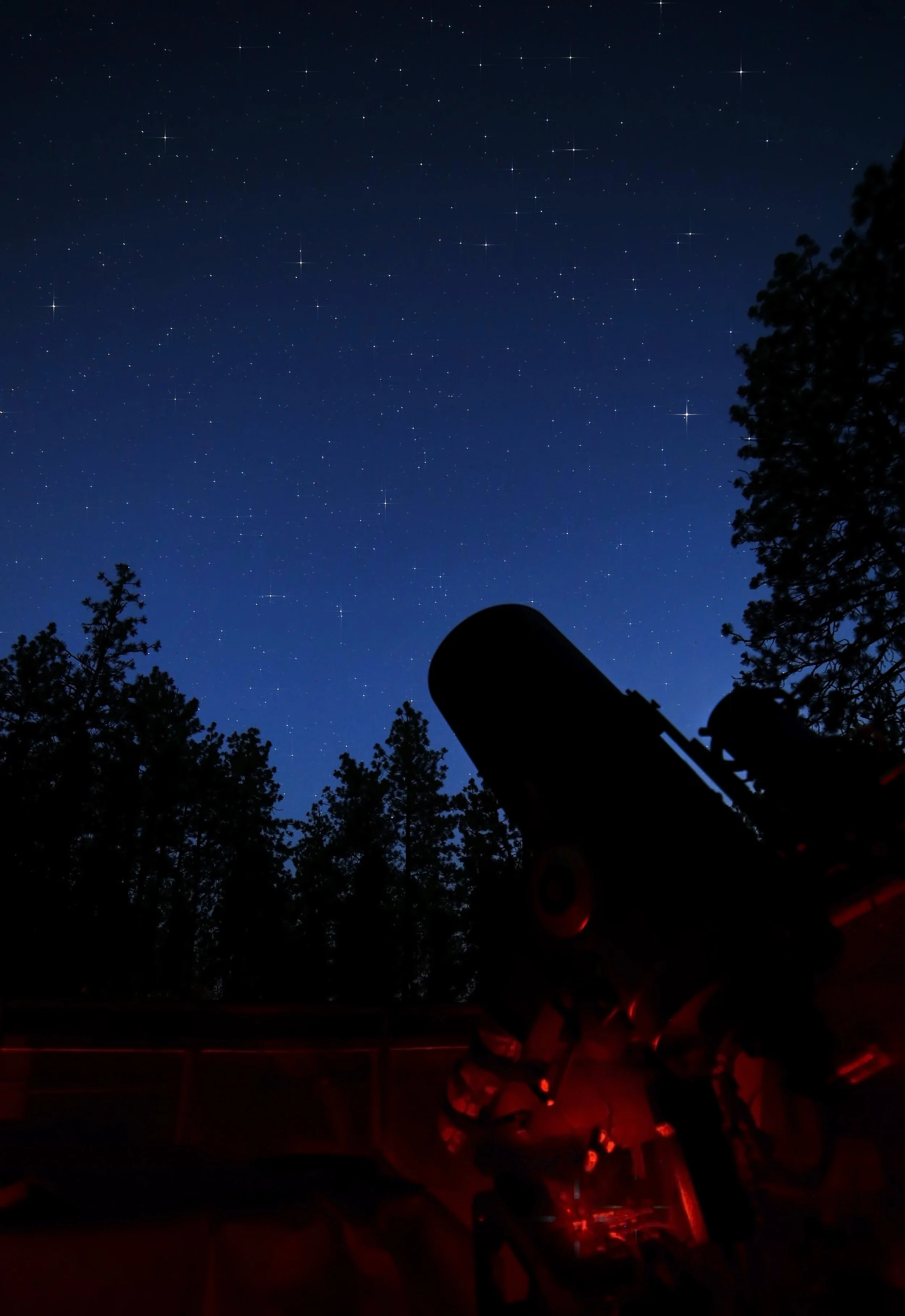early this evening, the second of three this year.
Tomorrow’s full moon is variously referred to as the Frosty Moon, Hunter’s Moon or Full Beaver Moon. Take your pick.
early this evening, the second of three this year.

Tomorrow’s full moon is variously referred to as the Frosty Moon, Hunter’s Moon or Full Beaver Moon. Take your pick.
above Adobe Mesa this evening, this year’s first supermoon, appearing slightly larger and brighter than usual.

is open for business this summer, and just in time for the next new Moon that occurs tomorrow.

The roll-off roof observatory houses a polar-aligned 10-inch Meade LX-200 Schmidt-Cassegrain telescope mounted on a fixed pier.
as captured this morning from the east end of Buchanan Lane in Castle Valley. The sun rises (#1) and is eclipsed by Baby Carriage Rock, it rises (#2) again and is eclipsed by Castleton Tower, only to rise (#3) a final time to mark the longest day of the year. It’s gonna be hot, too.

Composite of three stacked images, captured between 6:52 am and 7:41 am MDT.
UPDATE: This image is highlighted in this week’s Castle Valley Comments.
of 45.9 degrees from the Sun today, making it the best time to view the planet since it will be at its highest point above the horizon in the morning sky. Here’s the so-called “morning star” rising above Adobe Mesa around 4:30 am MDT.

at sunset will slowly creep westward across the lower slopes of Adobe Mesa through the coming months, arriving at its prominent prow at the time of the summer solstice. It’s a slow motion countdown to the longest day of the year.

The Tower’s sharp shadow will translate towards the right in this image of the face of Adobe Mesa during the next two months..
clears the prow of Adobe Mesa early this evening. In two days there will be a total lunar eclipse, but unfortunately the weather forecast predicts cloudy conditions in southeastern Utah this Friday evening.

this evening and its face is fully illuminated by the Sun, making it larger and brighter than any other time this year. Here Mars is rising above Castleton Tower shortly after sunset.

at the rising Full Wolf Moon tonight, but one has to listen closely in the wind.

that strongly silhouettes the Priest and the Nuns on the eastern skyline tonight.

Jupiter is the bright object above and to the right of Castleton Tower. Other bright stars in constellations Auriga and Taurus are also seen in this twilight image.

man last walked on the Moon in Taurus-Littrow valley. Here’s tonight’s waxing gibbous Moon, three days from full, with the Apollo 17 landing site indicated by the orange x where astronauts Gene Cernan and Harrison Schmitt (a geologist) performed three days of exploration in 1972.

Taurus–Littrow valley is located on the southeastern edge of Mare Serenitatis, the landing site of Apollo 17, indicated by the tiny orange x.
setting above Porcupine Rim this evening. Seventeen days to go until the winter solstice.

above Porcupine Rim early this morning. The final supermoon of the year.

the nearly full Moon rises next to Castleton Tower. Tomorrow night’s Full Beaver Moon will be the last of three supermoons for 2024. Enjoy.

shortly after sunset this evening, low to the west, hovering midway between Venus and Arcturus. Its size and brightness exceeded my expectations and the comet was easily observed with the unaided eye around 8 pm MDT as I snapped a series of images using different lenses.

Despite the nearly full Moon, the comet was initially spotted with binoculars, and then it became an easy naked eye object.

An automobile zooms along Highway 128 on the right, the occupants of which have no idea of the astronomical spectacle they are missing. That’s the planet Venus shining brightly in the lower left of the frame.

Telephoto shot of comet nucleus and tail that stretches more than five degrees across the night sky.
paint a slowly evolving and colorful kaleidoscopic display across the northern horizon shortly after sunset, seen below centered on Parriott Mesa. Magnificent.



after the summer’s absence via the San Rafael Swell. There’s no place like home.

Milky Way galaxy erupting a fountain of stars and nebulae, geyser-like from the rim of the Little Grand Canyon of the San Rafael River.
Sunrise from the Wedge Overlook, northern San Rafael Swell. Click on image to enlarginate.
The magnificent Buckhorn Wash pictograph panel. Click on image to embiggen.

The remote San Rafael River “Swinging Bridge” built 1935-1937 by the Civilian Conservation Corps, listed on the National Register of Historic Places.
in the high country of Colorado last night at 11,100 feet above sea level. It was certainly quite chilly around midnight when this image was captured.

Snowdon Peak (13,077 feet) and the Milky Way reflected in Little Molas Lake. Look closely above the galactic core and you’ll spy a short meteor trail.

The subalpine scene at sundown.
with the waning crescent Moon as its companion the day before Independence Day.

in the notch where the Dolomite Spire and Lighthouse Tower stand high above Big Bend in the Colorado River upstream from Moab, Utah.
